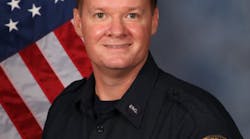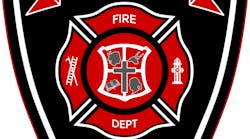Editor’s note: The National Institute for Occupational Safety and Health (NIOSH) Firefighter Fatality Investigation and Prevention Program conducts investigations of firefighter line-of-duty deaths to formulate recommendations for preventing future deaths and injuries. The program does not seek to determine fault or place blame on fire departments or individual firefighters, but to learn from these tragic events and prevent future similar events. NIOSH is a unit of the U.S. Centers for Disease Control and Prevention (CDC).
Firehouse® Magazine is pleased to join with NIOSH in presenting this valuable information. It is important to note that while some incidents that will be described here occurred several years ago, the information presented is valuable today. The accounts that follow are summaries of NIOSH investigations. The complete reports are available on the program website at www.cdc.gov/niosh/firehome.html.
CALIFORNIA
Firefighter Dies After Falling from Tailboard and Being Backed Over by Engine (Case F2005-01)
SUMMARY
On Aug. 14, 2004, a 25-year-old firefighter (the victim) died when she apparently fell from the tailboard and was backed over by an engine. The victim and her crew had been released from the scene of a residential fire. The road was blocked by other apparatus, so the victim’s crew began backing to an intersection approximately 300 feet away in order to proceed forward. The victim took her position on the tailboard as the “tailboard safety member†and signaled the driver to begin backing. A captain acting as the “traffic control officer†guided the backing operation from the road on the driver’s side, behind the apparatus, by using hand signals. When the captain turned and walked into the intersection to stop cross traffic, the victim apparently fell from the tailboard and was run over by the engine. Members on the scene provided advanced life support and the victim was transported to a hospital, where she was pronounced dead.
CAUSE OF DEATH
The medical examiner lists the cause of death as multiple blunt-force injuries.
RECOMMENDATIONS
Fire departments should modify existing policies to prohibit members from riding on the tailboard or any exposed position when the vehicle is in motion.
Fire departments should develop, implement and periodically review standard operating procedures (SOPs) for backing fire apparatus.
Fire departments should consider equipping apparatus with safety equipment such as mirrors, automatic sensing devices and/or video cameras to assist with backing operations.
ILLINOIS
1 Firefighter Dies and Another Is Seriously Injured When 2 Engines Collide at an Intersection While Responding to a Fire (Case F2004-43)
SUMMARY
On April 27, 2004, a 34-year-old part-time firefighter died after the engine in which he was riding (Unit 1) crashed into an engine from another department (Unit 2) as they passed through an intersection. Both departments were responding to the same call for a structure fire. The force of the impact caused the front of Unit 1 to collapse inward and cause crushing injuries to the unrestrained driver whose legs were pinned between the seat and the dashboard. He was extricated and transported to a hospital for treatment. The rear passenger of Unit 1 received minor injuries and was transported to a local hospital where he was treated and released. The victim, who was riding unrestrained in the officer’s seat, was ejected from the vehicle. He was transported to a hospital, where he was pronounced dead on arrival.
CAUSE OF DEATH
The county medical examiner listed the cause of death as craniocerebral injuries with aspiration of blood within the lungs.
RECOMMENDATIONS
Fire departments should provide training to driver/operators as often as necessary to meet the requirements of National Fire Protection Association (NFPA) Standards 1451, 1500 and 1002. This training should incorporate specifics on intersection practices.
Fire departments should develop and enforce standard operating procedures (SOPs ) for seatbelt usage, intersection practices and response to mutual/automatic aid incidents.
FOR FURTHER INFORMATION
If you have any questions regarding the NIOSH Firefighter Fatality Investigation and Prevention Program, please contact:
National Institute for Occupational Safety and Health
Division of Safety Research Surveillance and Field Investigations Branch
1095 Willowdale Road, M/SH-1808
Morgantown, WV 26505-2888
Telephone: 304-285-5916
Fax: 304-285-5774





